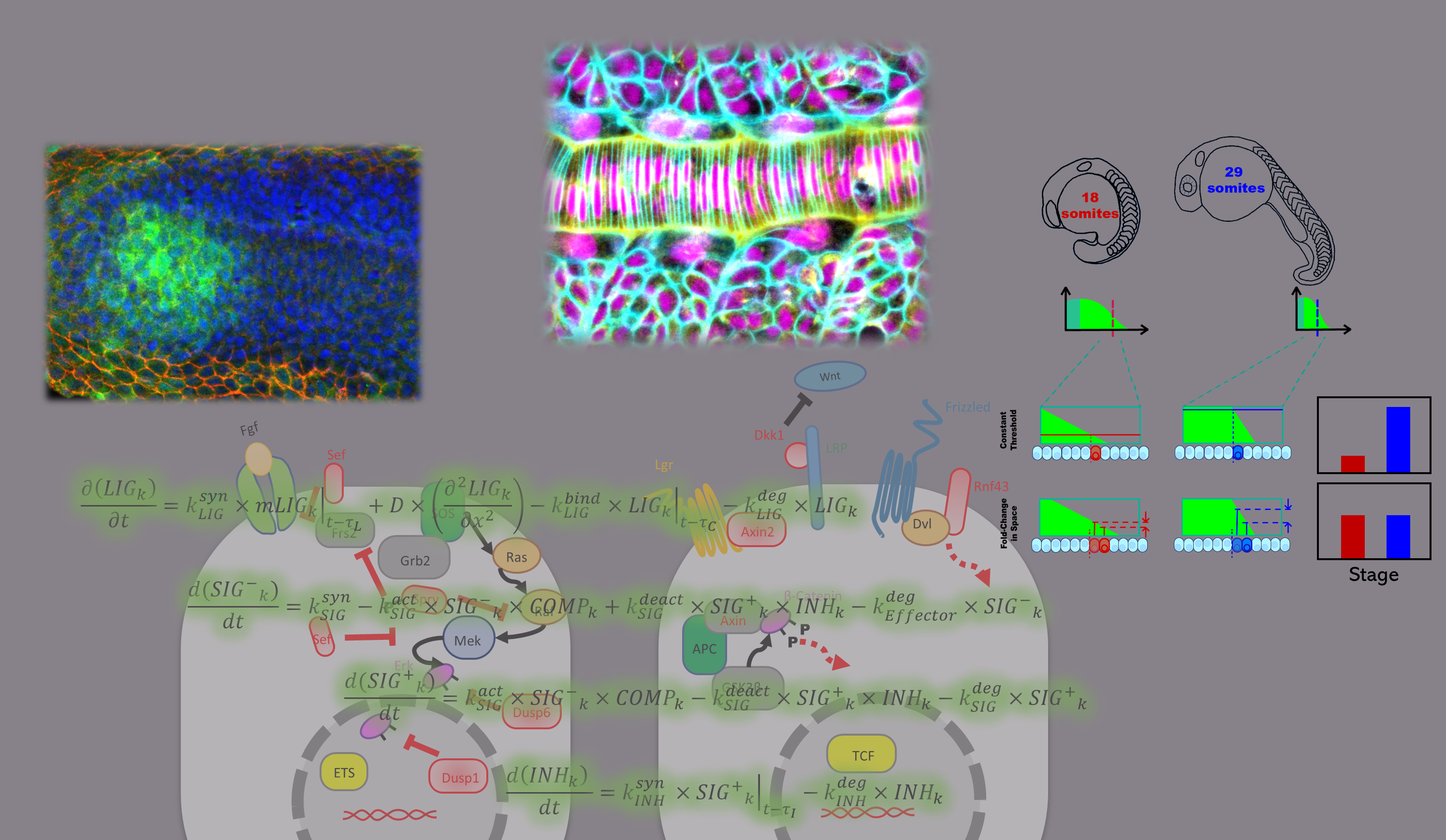Systems Control of Morphogen Signaling

Embryos undergo a remarkable transformation from a single cell to three-dimensional structured organisms, while genetically identical cell groups acquire specialized identities. During embryonic development, cells both produce and accurately interpret morphogen gradients, which are essential for determining their positions and guiding specific decisions [1].
Notably, only a small number of signaling pathways are commonly utilized by cells for the complex and robust tasks involved in early developmental patterning [2]. The majority of these pathways involve secreted ligands that establish gradients. However, our understanding of how specific characteristics of morphogen gradients (such as threshold, slope, temporal change, and persistence) evolve over time and provide positional information for cellular organization and differentiation, remains limited.
To gain insight into the system-level design of morphogen signaling information, our research focuses on posterior signaling gradients (Fgf and Wnt) in the unsegmented tail bud tissue, which ultimately give rise to somites [3,4]. We seek to answer the following key questions: a) How are these morphogen gradients established and shaped within the presomitic mesoderm? b) How is the diffusion of ligands polarized in the tissue? and c) how is the control of the range or extent of these gradients achieved?
Further Reading:
1. Simsek MF and Özbudak EM, "Patterning principles of morphogen gradients" Open Biology (2022). Cross Ref
2. Gerhart J, "Signaling pathways in development" Teratology (1999). Cross Ref
3. Simsek MF and Özbudak EM, "Spatial fold change of Fgf signaling encodes positional information for segmental determination in zebrafish" Cell Reports (2018). Cross Ref
4. Simsek MF, et al., "Periodic inhibition of Erk activity drives sequential somite segmentation", Nature (2023). Cross Ref